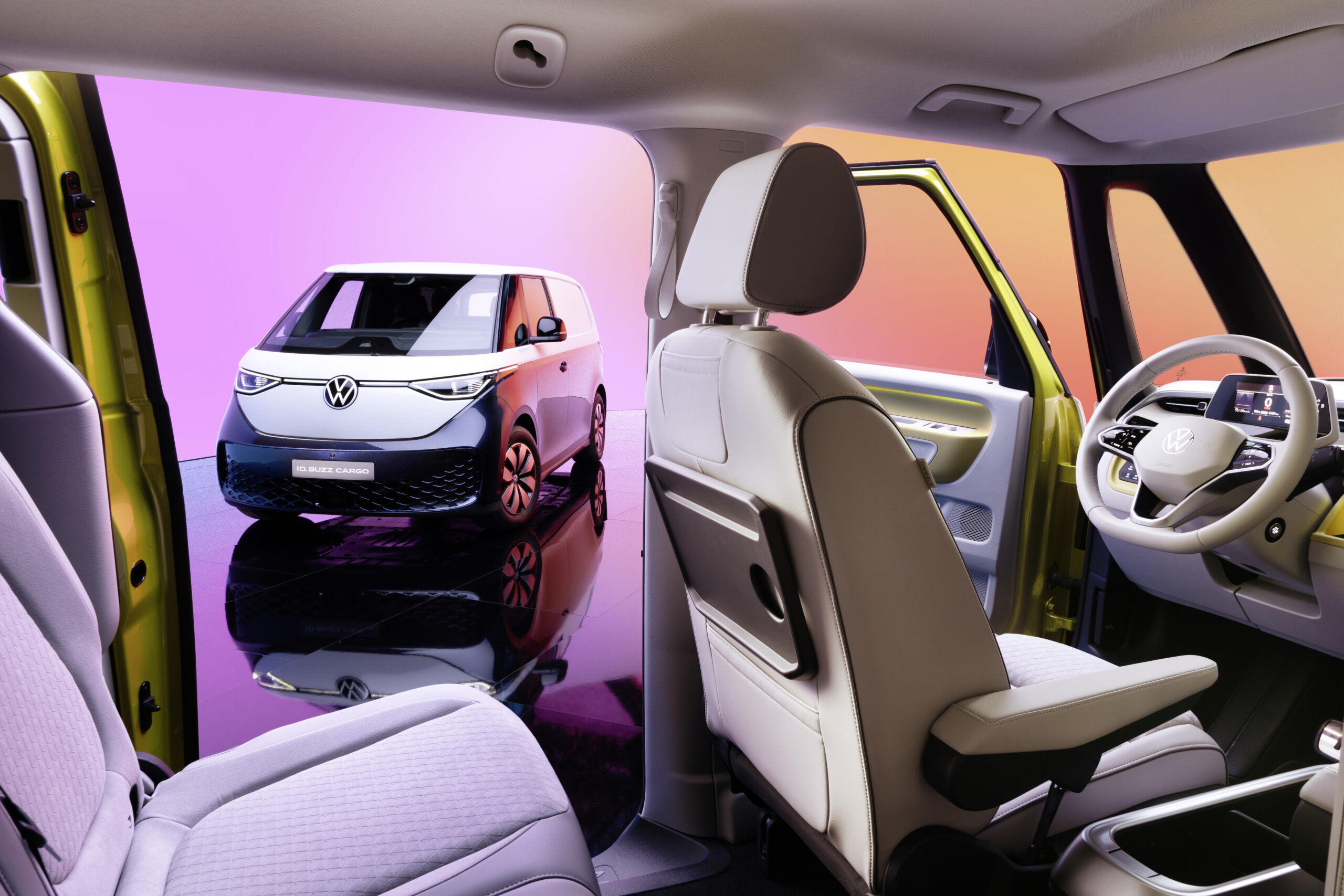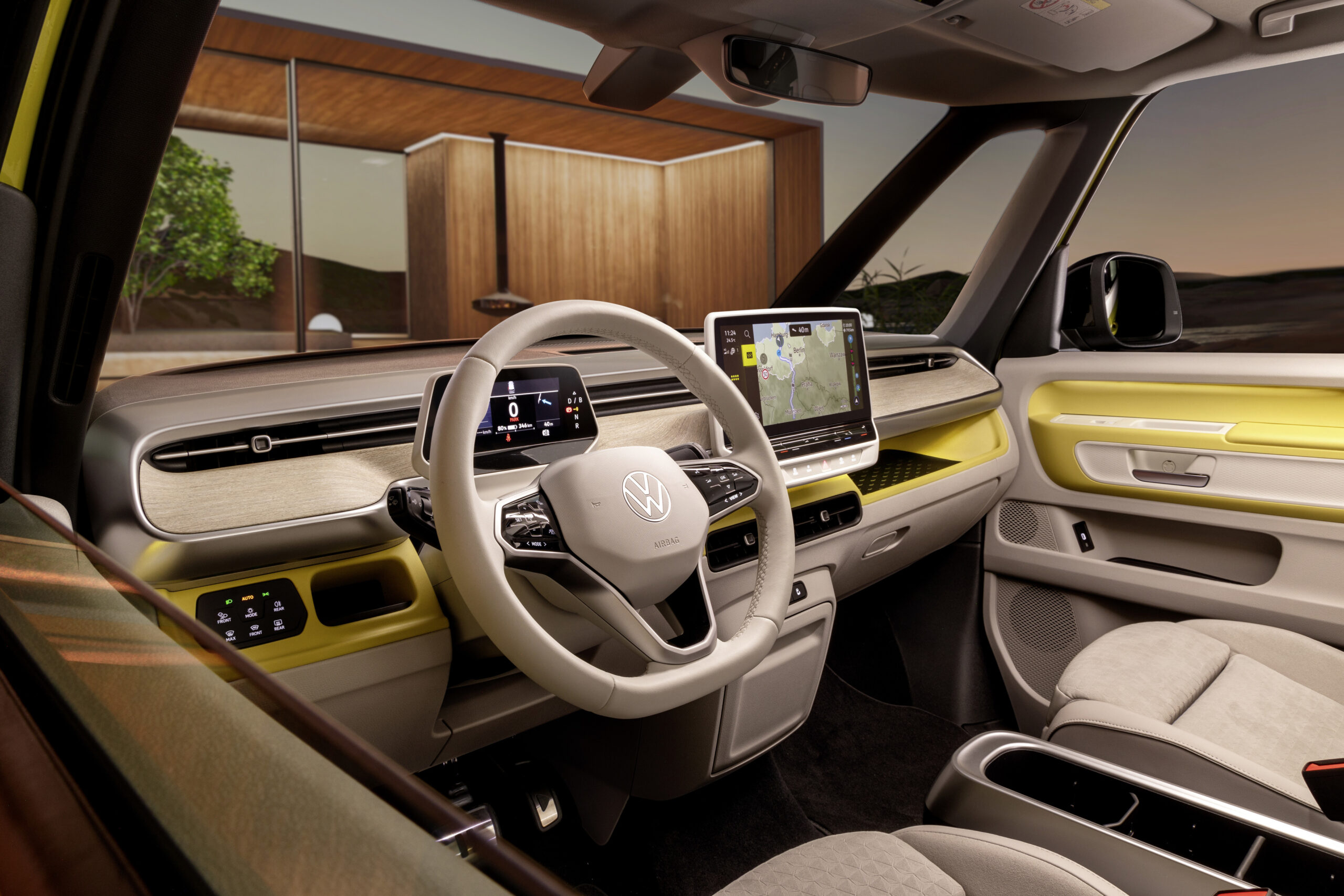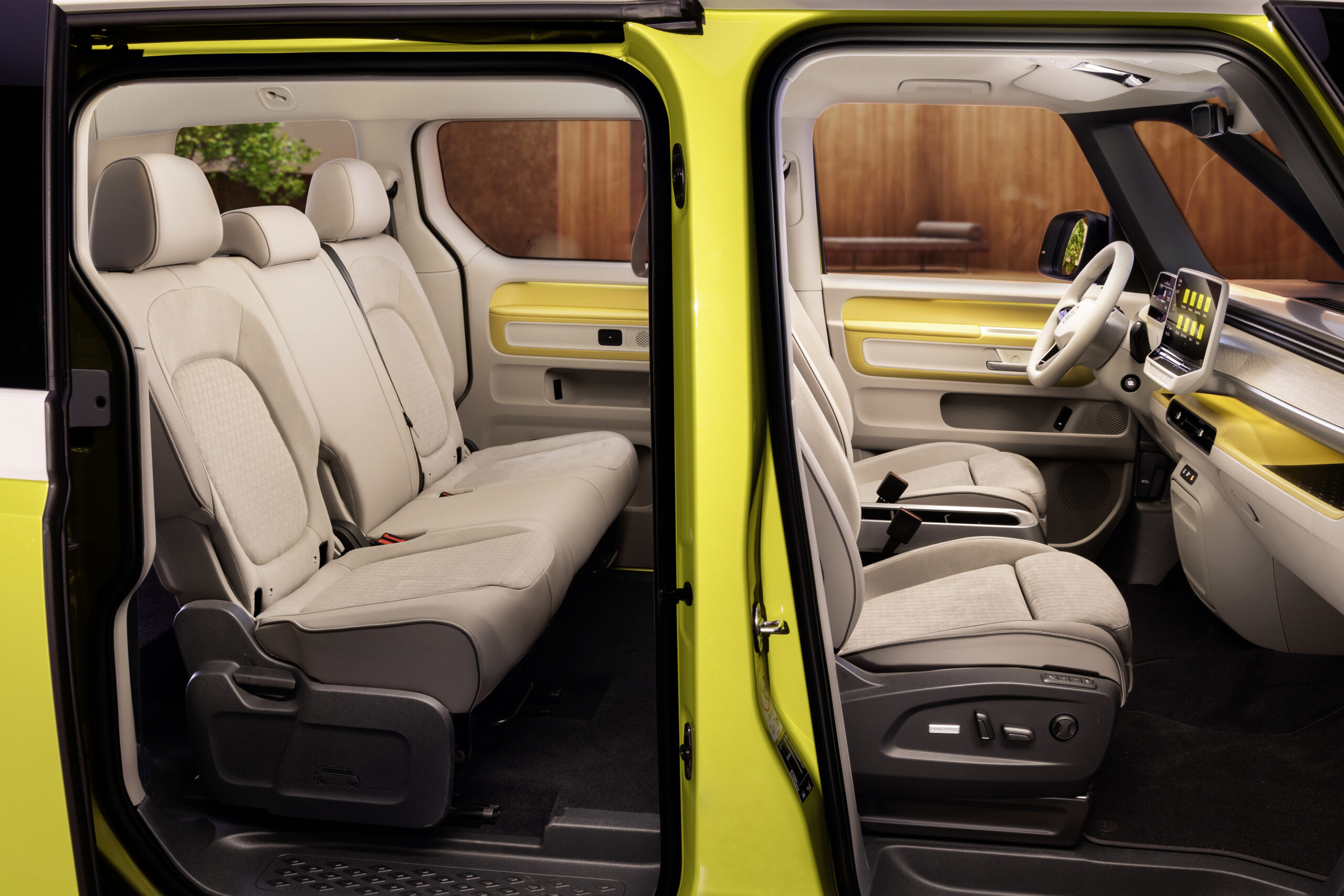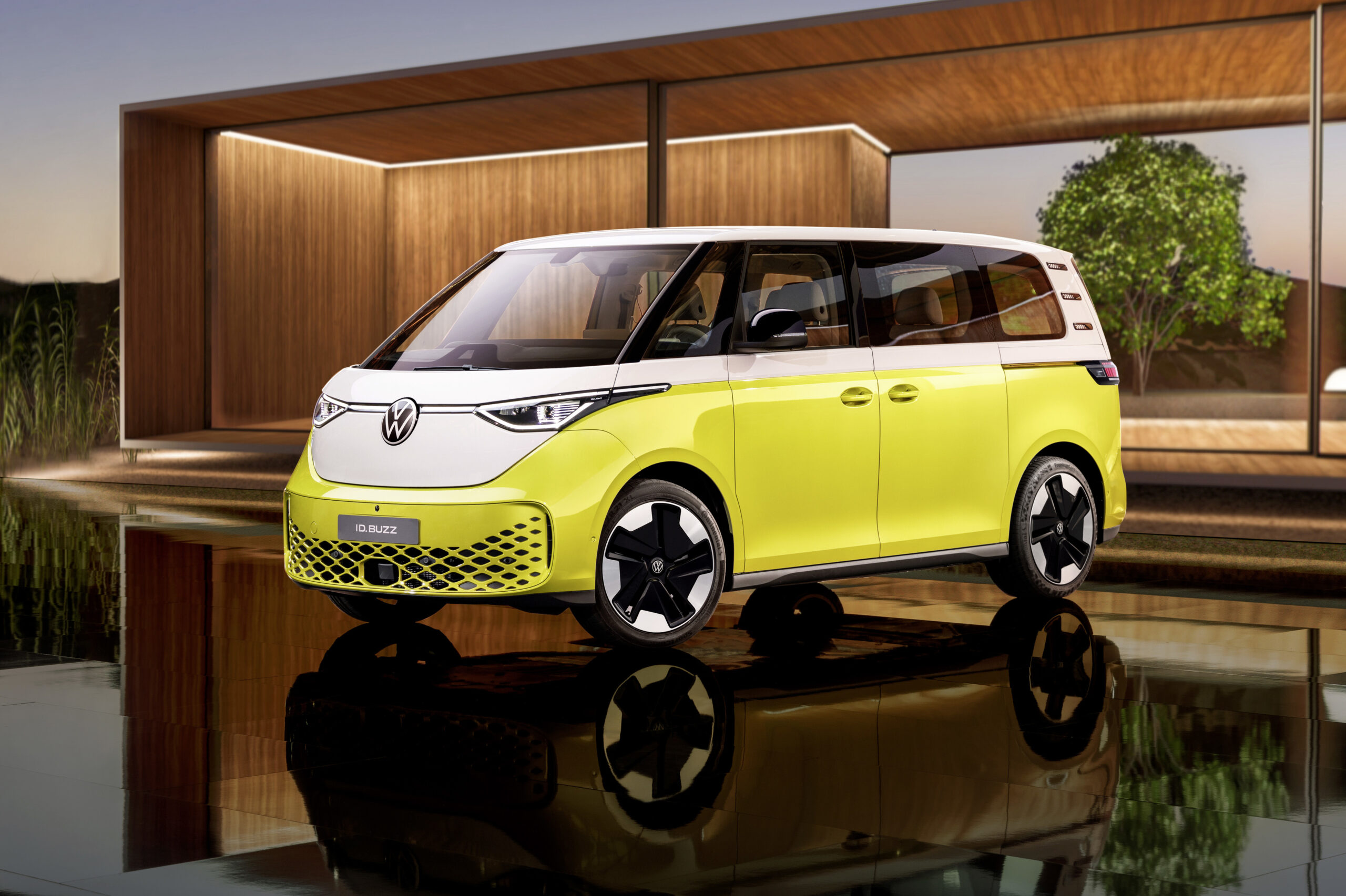Volkswagen has unveiled the long-awaited electric ID Buzz minivan, heralding a new era of CO2-free road trips. Onboard smart tech will also help people drive better. Jenny Southan reports
Inspired by the original 1950s Volkswagen Bulli, the ID Buzz is a 21st-century evolution with cutting-edge design, rechargable lithium ion battery and state-of-the-art software for automated parking.
Entering the European market in autumn 2022, the ID Buzz will provide space for five passengers and 1,121 litres of luggage. (If the second row of seats is folded down, the load capacity increases to up to 2,205 litres.)
Although its range has not yet been confirmed, Wired magazine expects it to be about 250 miles. (There is also a cargo option for commercial purposes.) The all-electric ID Buzz California camper van won’t arrive until 2025 at the earliest, however.
 Ralf Brandstätter, chairman of the board of management for Volkswagen Passenger Cars, says: “The ID Buzz is a genuine icon for the electric era. A car, the likes of which only Volkswagen can build. In the 1950s, the Volkswagen Bulli stood for a new feeling of automotive freedom, independence and great emotion.
Ralf Brandstätter, chairman of the board of management for Volkswagen Passenger Cars, says: “The ID Buzz is a genuine icon for the electric era. A car, the likes of which only Volkswagen can build. In the 1950s, the Volkswagen Bulli stood for a new feeling of automotive freedom, independence and great emotion.

“The ID Buzz picks up on this lifestyle and transfers it into our time: emission-free, sustainable, fully networked and now ready for the next big chapter: autonomous driving. With this car, we are bringing together the core themes of our ACCELERATE strategy in one product for the first time.”
Carsten Intra, chairman of the board of management of the Volkswagen Commercial Vehicles Brand, adds: “Both versions of the ID Buzz are pioneering in terms of their sustainability: their manufacture and shipping has a carbon-neutral footprint. We are also using recycled synthetic materials and the interior is completely free of any real leather.” He continues: “The ID Buzz will also be used for future autonomous mobility concepts such as ridepooling – an e-shuttle service of Group subsidiary MOIA that can be booked via an app. The electric Bulli is thus also a part of the future of inner-city transport.”
He continues: “The ID Buzz will also be used for future autonomous mobility concepts such as ridepooling – an e-shuttle service of Group subsidiary MOIA that can be booked via an app. The electric Bulli is thus also a part of the future of inner-city transport.”
Standout features include the “Car2X” local warning system, which uses signals from other vehicles and transport infrastructure to spot hazards in real time; a “Front Assist” emergency braking function; and “Memory Function’”for automated parking on a previously saved route.
There is also the option of “Travel Assist with swarm data”, which facilitates partially automated driving across the entire speed range and, for the first time, assisted lane-changing on the motorway. With no need for petrol or diesel, the ID Buzz’s “Plug and Charge” technology enables the vehicle to be easily charged while out and about with up to 170 kW. (The battery charge level rises from 5% to 80% in about 30 minutes.)
With no need for petrol or diesel, the ID Buzz’s “Plug and Charge” technology enables the vehicle to be easily charged while out and about with up to 170 kW. (The battery charge level rises from 5% to 80% in about 30 minutes.)
Even more interesting is that it has bidirectional vehicle-to-home charging that means you can use the car to power your house, if you need to (presumably in a power cut, for example). You’ll need a special DC bidirectional wall box, though.
VW suggests that owners can use bidirectional charging to cut energy bills, by charging the vehicle during the day using cheap electricity, then feeding it back into a home storage battery in the evening.
Jozef Kabaň, head of Volkswagen design, says: “The T1 – an icon of the 1950s – enabled people to gain mobility and freedom. With the ID. Buzz, we are transferring this T1 DNA to the present day and thus into the era of electric mobility. The ID. Buzz brings a lot of sympathy and proximity to people back to the road.”

